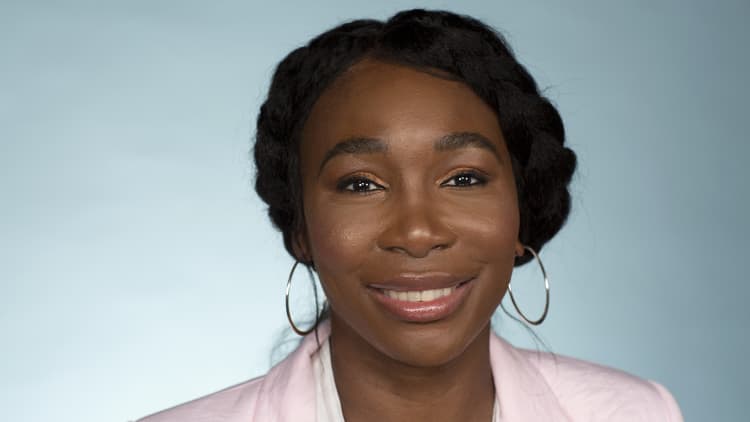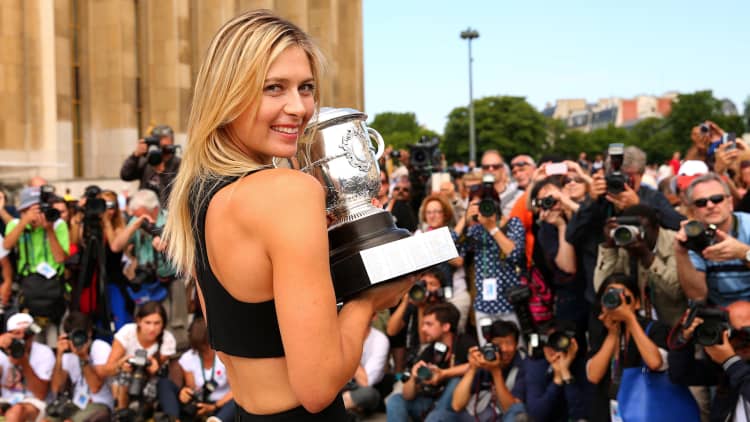Maria Sharapova first picked up a tennis racket at age four in her hometown of Sochi, Russia. By age six, she showed so much promise that tennis legend Martina Navratilova noticed her and recommended that her family move to the U.S. for more training opportunities.
Shortly after, the rising star and her dad flew from Moscow to Miami to develop her game at Nick Bollettieri's prestigious tennis academy. They arrived with just $700 and didn't know a word of English.
While Sharapova trained all day, her dad worked multiple low-wage jobs to cover rent, necessities and tennis lessons. They slept on a pull-out couch in a small apartment owned by a middle-aged Russian woman, Sharapova writes in her new book "Unstoppable": "We paid $250 a month for the use of the kitchen and bathroom, as well as the living room, giving us access to the television, which was important. That's how I learned to speak English."
The sacrifice paid off: A decade after moving to the States, at age 17, Sharapova won Wimbledon. That was the first of what would be five Grand Slam titles, and it came with a sizable paycheck: £560,500. Today, the 31-year-old has earned more than $38 million in career prize money, despite a 15-month suspension from the WTA, and was the world's highest-paid female athlete for 11 straight years.
Growing up with very little has influenced how she manages her millions today, she tells CNBC Make It. Despite her success on the court, she plans for the future as if her tennis career could end tomorrow. That's part of the reason she launched her candy company, Sugarpova, in 2012, with the long-term goal of building it into a lifestyle brand after leaving tennis. Her candy line, which includes chocolates and gummies, is now available in 22 countries and sold via a variety of retail partners as well as online.
"When you're young and you're successful and you're doing well and things are automatic for you in your life, you tend to think that that will continue for years on end," says Sharapova, who overcame a serious shoulder injury in 2008. "It's important to also be realistic about what can happen tomorrow; about injuries; about someone leaving your company; about another company coming in and being a competitor of yours."
The self-made millionaire has also realized that "money ultimately doesn't bring you the happiness that people from the outside might see," she tells CNBC Make It. "Of course, it allows you to buy more materialistic products, but all of those things are very temporary."
It's a lesson she learned first-hand, after splurging on a Louis Vuitton bag after winning Wimbledon as a teenager: "I wore it, I don't know, three times, and then I realized how silly that looked."
Ultimately, "money is not the pinpoint of happiness," says Sharapova, who won her first round match at the 2018 U.S. Open on Tuesday. "And I think growing up in that environment — growing up working for every single dollar, in a sense, that I've earned today — makes you realize that."
Don't miss: Maria Sharapova used to get candy after tennis practice—now she's turned her love of sweets into a business
Like this story? Subscribe to CNBC Make It on YouTube!




